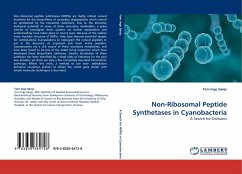The attenuator plays an important regulatory role in prokaryotic cells because of the absence of the nucleus in prokaryotic organisms. The attenuator refers to a specific regulatory sequence that, when transcribed into RNA, forms hairpin structures to stop translation when certain conditions are not met.Example: the trp operonAn example is the trp gene in bacteria. When there is a high level of tryptophan in the region, the bacterium may not want to synthesize more because it wants to save energy. When the RNA polymerase binds and transcribes the trp gene, the ribosome will start translating. The attenuator sequence, which is located between the mRNA leader sequence and trp operon gene sequence, contains four domains, where domain 3 can pair with domain 2 or domain 4.The attenuator sequence at domain 1 contains instruction for peptide synthesis that requires tryptophans. A high level of tryptophan will permit ribosomes to translate the attenuator sequence domains 1 and 2, allowing domains 3 and 4 to form a hairpin structure, which results in termination of transcription of the trp operon.
Bitte wählen Sie Ihr Anliegen aus.
Rechnungen
Retourenschein anfordern
Bestellstatus
Storno








